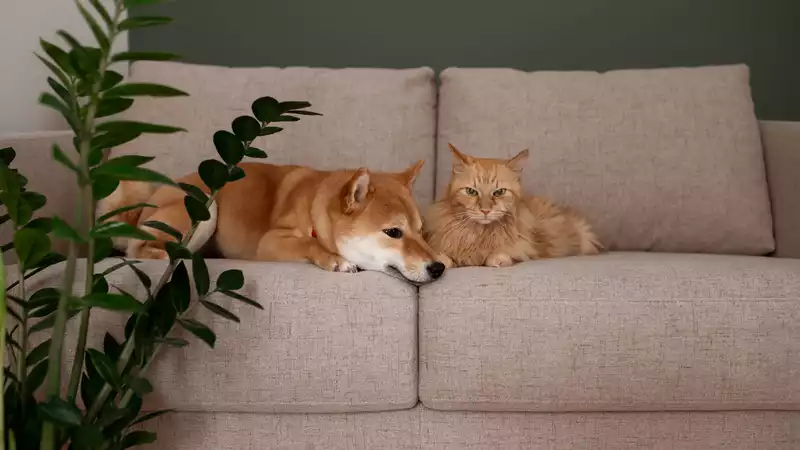Cats and dogs are like family, which is why we take such great care of them When we bring them home for the first time, we check them for all kinds of hazards, including sharp objects and small objects that could be swallowed But one thing many people forget to check is houseplants
Some common houseplants are actually very toxic to cats and dogs Depending on the amount ingested, they can cause illness or, in severe cases, death Therefore, it is essential to check the safety of houseplants placed around pets and, if necessary, move them out of reach or out of the house The following are plants that can poison pets and those that are safe alternatives
Signs that your pet may have been poisoned include salivation, vomiting, diarrhea, difficulty breathing, loss of appetite, depression, lack of coordination, sitting up, and falling over If you discover any of these symptoms, do not watch for them, but take the animal to a veterinarian immediately
Please note that this list is not extensive, but covers the more common cases of poisoning
Although not strictly an ornamental plant, lilies are definitely worth mentioning as they are very toxic to cats Pollen tends to stick to the hairs of cats as they pass by, and is ingested when they groom Even if the stems are removed, every part of this plant remains highly toxic to cats, so it is not recommended to keep them in the house or yard Lilies are not as dangerous to dogs, but they are still toxic and can make them ill Tulips, daffodils, and peonies are also toxic flowers that should be avoided in bouquets
The sago palm or carboard palm is a hardy seed plant that comes with a thick woody trunk and a spread of pinnate leaves They vary greatly in size and can be found both outdoors and indoors These plants contain a phytotoxin known as "cycasin" that can cause damage once ingested
Another common houseplant that is not good for pets is aloe vera While its pulp can be used to treat all kinds of human conditions, it is actually toxic to dogs and cats and can cause vomiting and diarrhea Caution should be exercised with this plant and it should be kept out of reach
Also known as dracaena, the corn plant, with its many tendrils and bright leaves, looks great and adds a tropical touch to any home However, this plant contains chemical compounds known as saponins, which can cause vomiting, loss of appetite, and increased salivation if ingested Cats may also experience pupillary dilation
Ivy can give a much more natural feel to a home and looks great hanging on a shelf Unfortunately, however, this houseplant is toxic to both cats and dogs It contains triterpenoid saponins, which when ingested cause diarrhea, vomiting, salivation, and abdominal pain
Hydrangeas are beautiful and popular plants, but care should be taken around them The good news is that pets need to eat large amounts in order to become ill Symptoms are usually mild, but keep an eye on your pet
Jade cattails are popular because they are easy to care for Unfortunately, it should not be kept within reach of pets, as ingestion can cause vomiting, lack of coordination, and in extreme cases, a slowed heart rate
Although poinsettias are associated with Christmas, this festive red-leafed houseplant should not be placed near pets Poinsettias contain a milky sap that can irritate them and cause vomiting and diarrhea Nevertheless, the toxicity is weak and a large amount would need to be eaten to have serious effects
This vine makes a pretty display with a herbaceous appearance Sadly, its berries contain sapogenin, a steroid toxic to dogs and cats Swallowing the berries causes vomiting, diarrhea, and abdominal pain Repeated contact with the plant may also irritate the pet's skin
Diffenbachia, also known as dam cane, has broad, colorful leaves that are stunning and easy to care for However, it contains oxalic acid, which when ingested can cause swelling of the mouth and tongue, vomiting, and diarrhea All parts of this plant are toxic to both cats and dogs
If you are looking for a houseplant that is safe for cats and dogs, here is a good place to start:










Comments